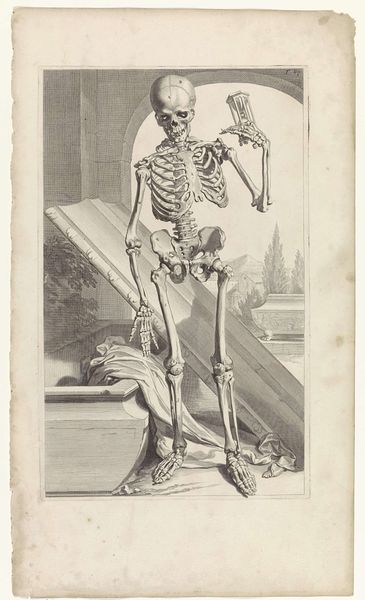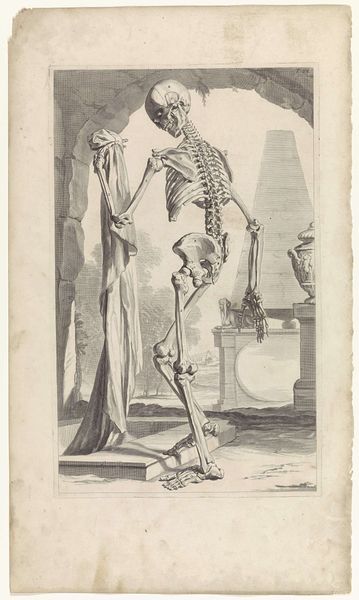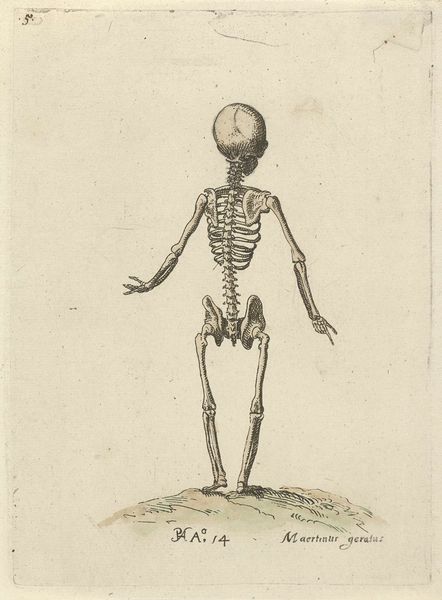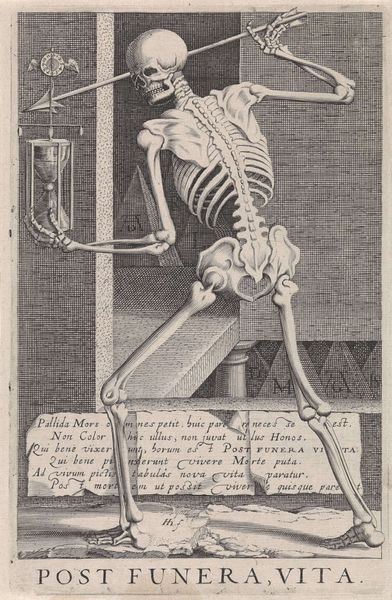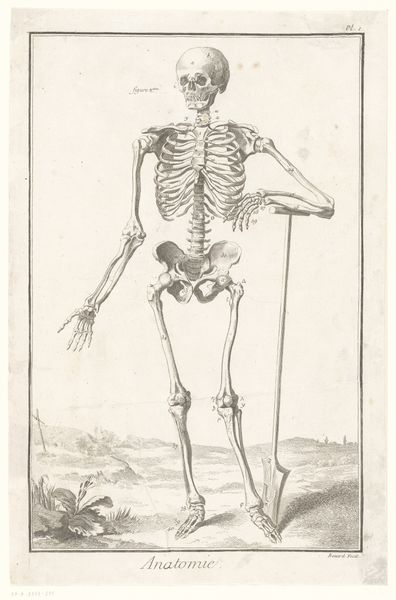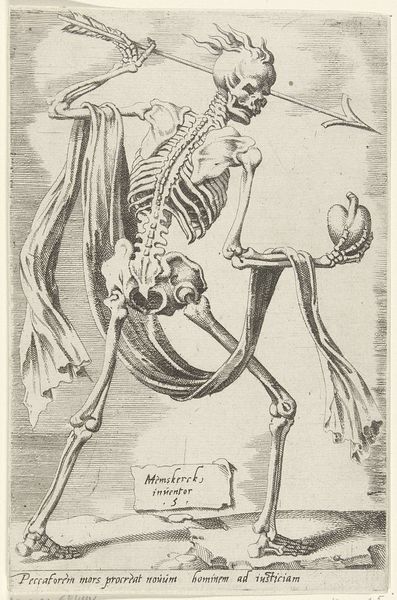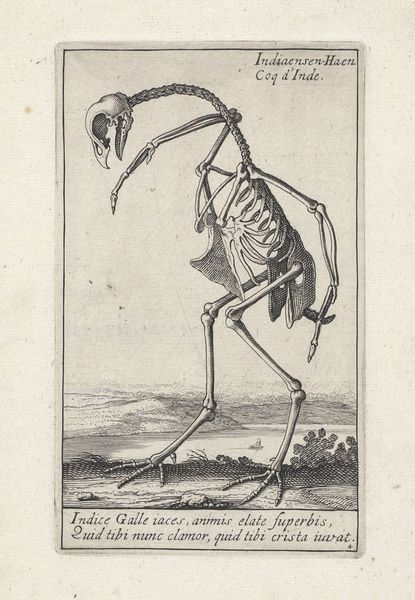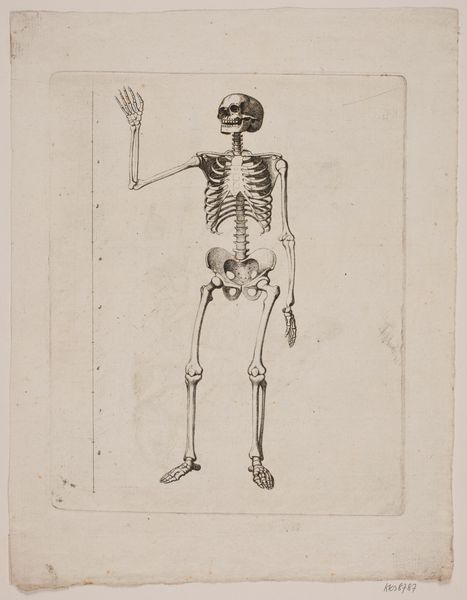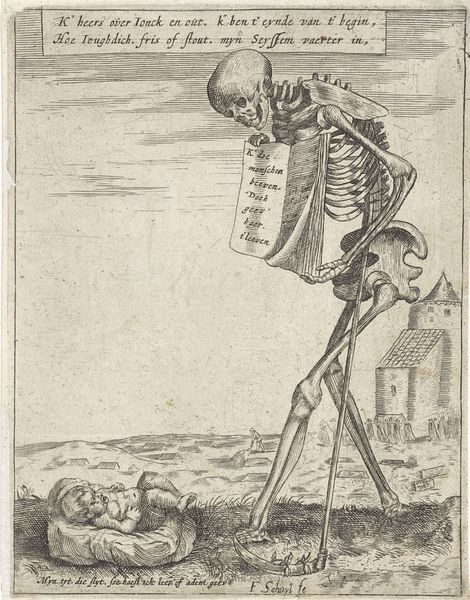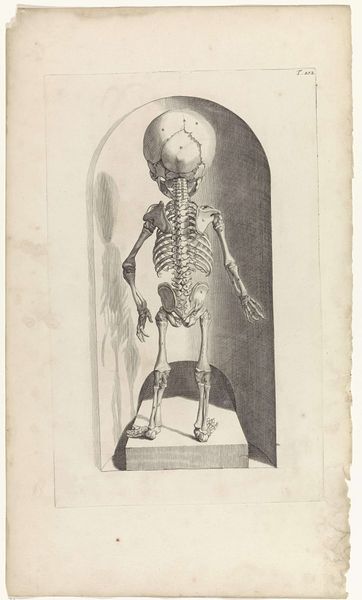
drawing, engraving
#
portrait
#
pencil drawn
#
drawing
#
light pencil work
#
baroque
#
pencil sketch
#
old engraving style
#
figuration
#
momento-mori
#
history-painting
#
academic-art
#
engraving
Dimensions: height 354 mm, width 221 mm
Copyright: Rijks Museum: Open Domain
Curator: Jan Wandelaar's engraving, "Skeleton beside Monument," from 1725 presents a rather striking image. What are your first impressions? Editor: Well, it's definitely a *memento mori*, quite stark. The skeleton's pose is fascinating, almost contemplative, contrasting with the overt message of death. How would you interpret this work, particularly given its creation as an engraving? Curator: The material context is critical here. Engravings were not merely reproductive technologies; they were labor-intensive processes, transforming intellectual ideas into tangible commodities. This piece engages with the philosophical question of mortality but also materially embodies the labor of its making, disseminating this contemplation to a broader audience. How might the rise of print culture influence its consumption? Editor: That's a great point! The engraving allowed for wider distribution, making such a complex philosophical concept accessible beyond the elite. It challenges the idea of art as a unique, untouchable object. The means of production are front and center! Curator: Precisely! The materiality of the print makes this a readily accessible reminder. Did these prints, produced and purchased as adornments or pedagogical tools, alter or challenge societal perceptions around life, death, and even knowledge itself? Editor: Hmm, that's interesting. The repetitive nature of the printmaking process creates a sort of ironic detachment from the intensely personal subject matter. I hadn't thought about how the process and consumption change the original meaning! Curator: Exactly! Think of the artist's labor, the dissemination, and even the eventual wear and tear of the print over time. All these layers become part of the work's story. Editor: That perspective really shifts my focus! Seeing the printmaking as an essential part of the art’s meaning rather than just a way to reproduce it opens up a whole new layer of understanding. Curator: It's about understanding how art exists in and interacts with the world, materially and socially. Considering the circumstances of production reframes our reception of it.
Comments
No comments
Be the first to comment and join the conversation on the ultimate creative platform.
